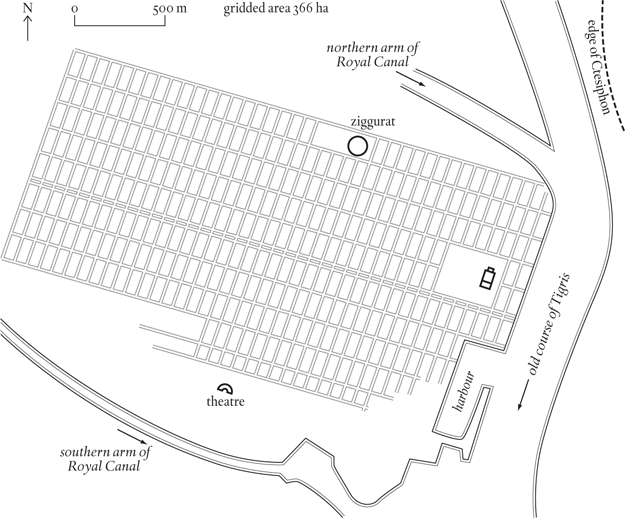
28 km (18 miles) south of Baghdad, Iraq
Capital of the Seleucid Kingdom
Seleucia was built as a replacement for BABYLON. Where Alexander the Great (336–323 BC) had been content to let Babylon continue as the metropolitan centre for Mesopotamia (and points east), Seleucus, the Macedonian general who took over the eastern two-thirds of Alexander’s empire, was determined that this core region should have a Greek-style capital. The position he chose for his new metropolis – which, in the fashion of the time, he named after himself – was some seventy kilometres (forty-five miles) to the north of Babylon, in the ‘waist’ of Mesopotamia, the region where the gap between the Euphrates and Tigris is at a minimum, and where the two were connected by the Nahrmalcha, or Royal Canal. There was already a settlement here called Opis – on the south side of the Nahrmalcha at its junction with the Tigris – which appears to have been a nodal point in Alexander’s itinerary. It marked the point where the road leading north divided, the left-hand fork following the line of the Nahrmalcha and the Euphrates towards Syria and, ultimately, Europe, the right-hand fork staying with the Tigris and its branches and providing access to Media and Armenia. The site was a perfect match for Seleucus’ ambitions.
The sources don’t say exactly when construction of the town began; it could be as early as 312 BC, when Seleucus first emerged as a lead player in the carving up of Alexander’s empire; it was certainly no later than 300 BC, the year after Seleucus defeated and killed Antigonus, his main rival, at the Battle of Ipsus. Work on it will have been essentially complete by 274 BC, the date when Antiochus I, Seleucus’ son and heir, had the remaining inhabitants of Babylon forcibly removed to the new capital. From that time on, Seleucia on the Tigris (the extended title is necessary to distinguish it from the dozen or so Seleucias elsewhere in the empire) was counted as one of the major cities of the Hellenistic world. After the city was established, we know very little about its history over the next 400 years.
The pre-existing settlement of Opis bequeathed one monument to Seleucia, a ziggurat dating back to the eighth century BC; everything else was swept aside by the Greek king’s surveyors, who laid out a grid of rectangular blocks covering the entire area south of the ziggurat – something of the order of 366 hectares. The exact shape of the city is unknown, but it was compared to an eagle with its wings spread.
